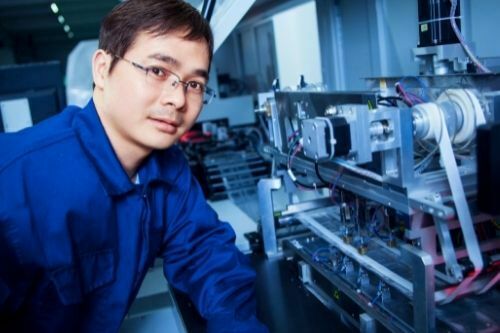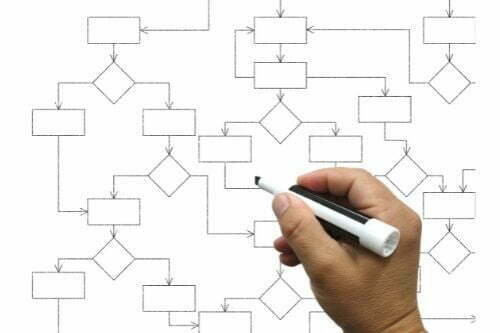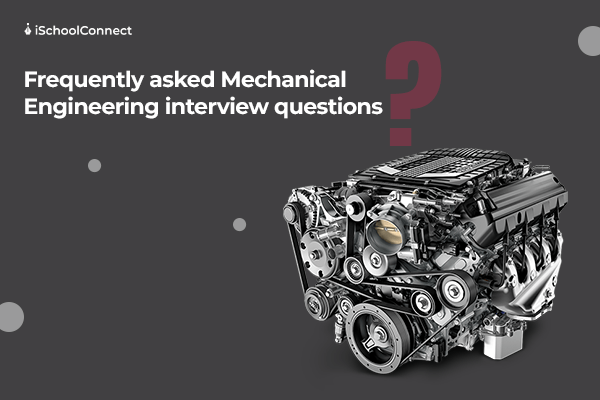Table of Contents
- What is the skill that a mechanical engineer should have?
- How do you differentiate thermodynamics and heat transfer?
- Why are most gas containers cylindrical in shape?
- Why is heat treatment required?
- What gases can be used in welding instead of nitrogen?
- What is viscosity and why is it important?
- What is a periscope?
- What is extrusion?
- Which mechanical engineering tasks interest you?
- What is a process flow diagram?
- Explain the difference between the turbine and the pump
- What we have to say
- FAQ’s
Preparing for typical interview questions will help you come up with effective responses and equip you to face the interview session with more confidence. This approach ensures a fruitful interview experience. Read the blog to know about the most frequently asked mechanical engineering interview questions –
What is the skill that a mechanical engineer should have?
You can answer this question by highlighting the general skills that a mechanical engineer must-have. These are good analytical skills, problem-solving skills, mathematic skills, creative design skills, and a strong understanding of engineering fundamentals.
How do you differentiate thermodynamics and heat transfer?

To answer this question, concentrate on the fundamentals of these two phrases before describing them. You might mention that thermodynamics, an important physics field, works with equilibrium states and changes them. On the other hand, heat transfer is a non-equilibrium process, since it involves systems that are not thermally balanced.
Why are most gas containers cylindrical in shape?
Queries about the shapes and structures of the equipment also form the crux of the mechanical engineering interview question. Here’s how you can respond to the question:
The gas canisters are cylindrical to withstand high pressure. The sphere is the most efficient shape for resisting high internal gas pressure, but it is relatively expensive to produce. A cylinder with a domed top and bottom is less expensive and has enough potential to remain unaffected by internal gas pressure.
Why is heat treatment required?
This question is yet another important one in the list of mechanical engineering interview questions. Here’s how you can respond to the question:
Hardened materials must be heat treated to improve their dimensional stability and toughness. For improved mechanical qualities, they are generally tempered or stress eased. Increased hardness or strength are two examples.
What gases can be used in welding instead of nitrogen?
Argon, helium, or carbon dioxide can be used in place of nitrogen during welding. These gases can also help avoid porosity.
What is viscosity and why is it important?
The viscosity of a fluid is its thickness. For example, honey has a greater viscosity than water. Various fluids have different densities, and things can alter when this element is taken into account. At the molecular level, viscosity is the result of the interaction between the various molecules in a fluid. Friction between the molecules in a fluid is another name for it. It is the amount of energy required for fluid flow.
This is a crucial characteristic since it has an impact on heat generation in cylinders, bearings, and gear sets. The viscosity of oils influences the resistance flow.
What is a periscope?
Explaining the engineering concepts is yet another most frequently asked mechanical engineering interview question. Here’s how to answer the question:
A periscope is an optical equipment that is used to see objects that are above the level of vision. Periscopes are employed in submarines in the real world to keep an eye on attackers or other dangers.
What is extrusion?
Extrusion is the process of drawing a metal bar through a mandrel to lengthen it. The metal bar is shaped during this procedure. Mechanical engineering certification courses may teach you more about extrusion.
Which mechanical engineering tasks interest you?
The only response that is surely not going to create an impression is – ‘Any task’. Solving equations, design engineering, prototyping, testing, engineering analysis, and explaining the design are all engineering activities that can be mentioned in your response.
What is a process flow diagram?

Chemical and process engineering are common applications. A process flow diagram (PFD) is a diagram that shows how equipment and plant operations run.
The PFD depicts the link between key plant equipment but excludes small information such as designations and plumbing details.
Explain the difference between the turbine and the pump
Distinguishing between the basic aspects of mechanical engineering also forms the crux of the mechanical engineering interview questions. Here’s how to briefly respond to the question:
The turbine converts the fluid’s flow energy to mechanical energy, while the pump transfers mechanical energy to the fluid.
What we have to say
- You will be assessed for your basic skills as well as the technical knowledge that you may have about mechanical engineering.
- Apart from this information, you should also have information about the firm you are applying to, and the job role.
- You should also be well-prepared to speak about yourself, your experience, and your qualifications.
Liked the blog? Comment below and share your thoughts with us!
Liked this blog? Read more: Mechanical engineering subjects you must know about!
FAQ’s
Q1. Define pitting
Answer –“Pitting” refers to a specific type of surface damage or failure that occurs in materials, particularly metals. It is characterized by the formation of small, localized pits or cavities on the material’s surface due to various factors such as corrosion, wear, or contact stresses.
Q2. Explain enthalpy
Answer – Enthalpy is the heat content of a thermodynamic system.
Q3. What are the various types of brakes?
Answer – The various types of brakes include –
- Hydraulic brakes
- Mechanical brakes
- Electrical brakes






